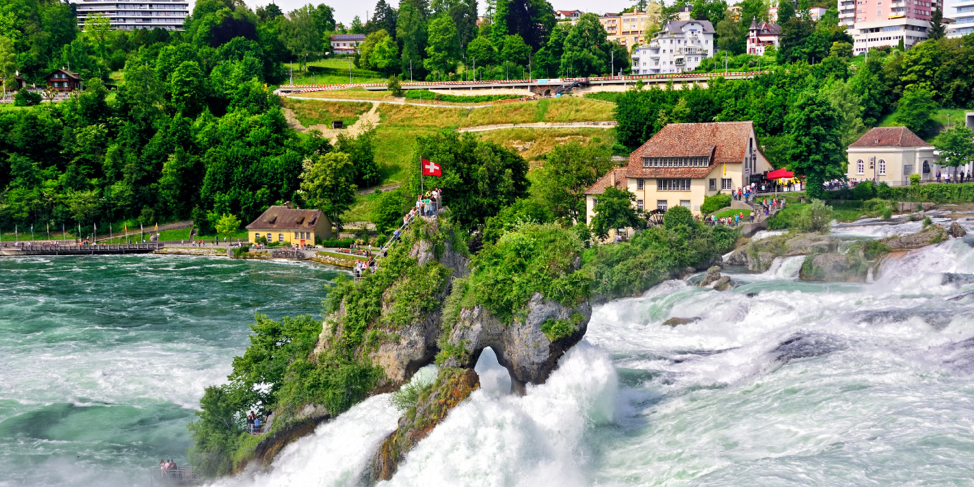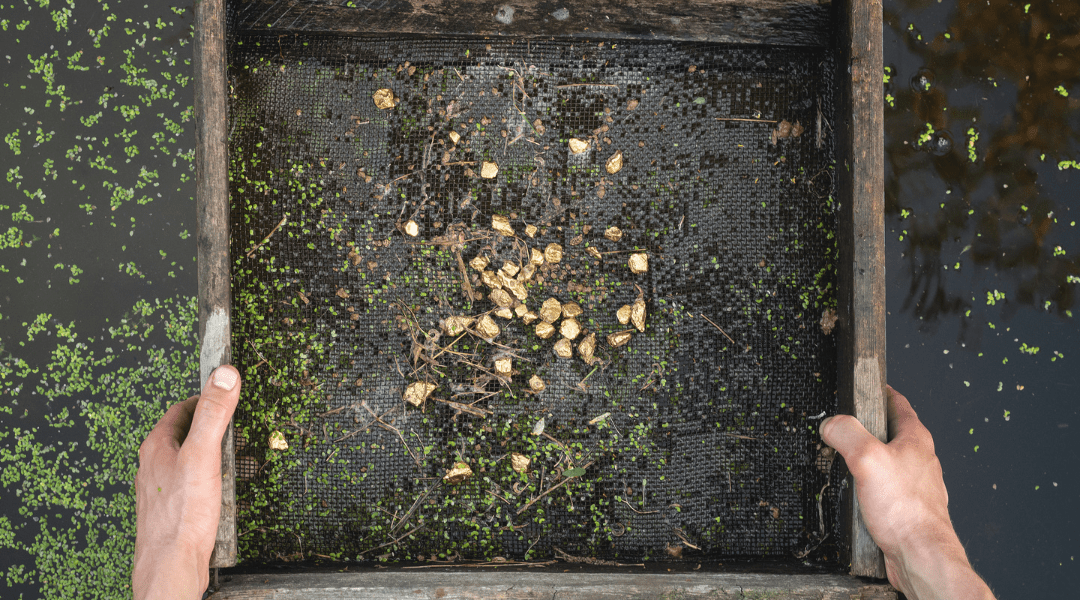The history of gold washing along the Rhine River has been passed down for generations. Learn all about it in this blog post
Ever heard the phrase “golden opportunity”? Well here the phrase takes a literal meaning.
Picture yourself in the midst of a lush landscape, with a view of majestic alpine peaks and rolling hills. You’re standing on the banks of the Rhine River, ready to partake in this once-in-a-lifetime activity – gold washing.
The panoramic land provides the perfect backdrop for a traditional gold washing experience. You don your waders, dip your pan into the river and begin to search for flakes of gold. The experience is as thrilling as it is satisfying – you never know when you might find that elusive fleck of treasure!
But it’s not just about the gold. While you’re out there in the wild and free, you’re taking part in an activity that is deeply rooted in sustainability and respect for nature. Gold washing doesn’t use any chemicals or alter the environment; instead, it embraces the natural beauty of the Rhine River and works to preserve it for future generations.

We want to ensure that gold washing remains an integral part of the landscape and culture. We aim to make it a sustainable practice that will outlast us, while also providing an enriching experience for those who take part in it. So, let’s ensure this golden opportunity doesn’t just fade away.
This article will revolve around sustainability and how it can meet tradition to create an experience that is both enriching and rewarding. We’ll explore various aspects of gold washing, from what it is to the environmental impact, so that you can learn more about this unique activity in our beautiful countryside.
The Rhine River

First, let’s get to know the captivating Rhine River. The Rhine flows through Switzerland and continues into the Netherlands. It eventually empties into the North Sea, making it one of Europe’s longest rivers. It’s one of our most important rivers and is a key transportation route for commercial traffic.
The river also has an abundance of gold in its waters, which makes it the perfect location for gold washing. You’ll find gold flakes and sometimes even larger nuggets in the river, which can be collected using pans or sluices.
The Rhine River is also home to a diversity of fish and other aquatic life, making it an important natural habitat. In order to protect the river’s environment, those who participate in gold washing must adhere to strict guidelines and regulations, which we’ll discuss in more detail later.
What Is Gold Washing?

Gold washing is a method of panning for gold in rivers and streams. The process is simple: you get a shovel, some pans, and start scooping up sand and gravel from the river’s bottom.
You then place the mixture into a pan and swirl it around in circles until all the dirt has settled to the bottom. The heavier particles (like gold) will remain at the top and can be collected.
It really is that easy! Gold washing is a fun and exciting way to immerse yourself in the wilderness, while also unearthing some of nature’s most precious treasures. You don’t have to be an experienced gold rush miner to find success – all it takes is a bit of patience and some luck.
Before you know it, you’ll have a panful of golden flakes and memories to last a lifetime!

What You Need to Know Before Gold Washing in the Rhine

As with most outdoor activities, gold washing in the Rhine has certain rules and regulations that must be followed. See below for some of the most important points to keep in mind while out on the river:
- Gold washing is regulated in Switzerland, requiring you to get a permit before doing it. This shouldn’t be an issue, as the permits are relatively easy to obtain. However, you don’t want to get caught without one, as fines for not having a permit can be steep.
- It’s also important to note that only hand methods are allowed – no dredging or machinery of any kind. You can use a pan, shovel, and a gold wash sluice that’s no longer than 1.2 meters.
- Gold washing is only permitted during certain times of the year: from the 1st of May to the 15th of September. This is due to environmental reasons, as it helps protect the fish and other wildlife in the river from disturbance.
Sustainability of Gold Washing in the Rhine

we can ensure that gold washing in the Rhine remains a safe and sustainable activity for years to come
Gold washing may seem like a harmless activity, but as we already mentioned, it must be done sustainably. After all, the Rhine River is a precious natural resource, and its environment needs to be protected at all costs.
To that end, Swiss authorities have put in place several measures to ensure the sustainability of gold washing in the Rhine. This includes strictly controlling the number of people who are allowed to gold wash in any given area, as well as preventing the over-harvesting of any one spot. In addition, authorities also monitor the riverbed for signs of environmental damage, and if they find any, then steps are taken to mitigate it.
Finally, all gold washing permits must be renewed each year to ensure that only responsible and knowledgeable gold washers are taking part in the activity.
By following these guidelines, we can ensure that gold washing in the Rhine remains a safe and sustainable activity for years to come. It’s the least we can do for a river that holds so much history and beauty.
The Conclusion
Gold washing in the Rhine River is an activity unlike any other. With pristine scenery and plenty of gold to be found, it’s the perfect way to explore Switzerland’s beauty and unique culture, all while having some fun!
Panoramic views, exciting adventure, and – of course – the potential for finding some gold make this activity a must-try when living in Switzerland. Just remember to stay safe and sustainable in your gold washing journey!
Good luck, and happy panning!

